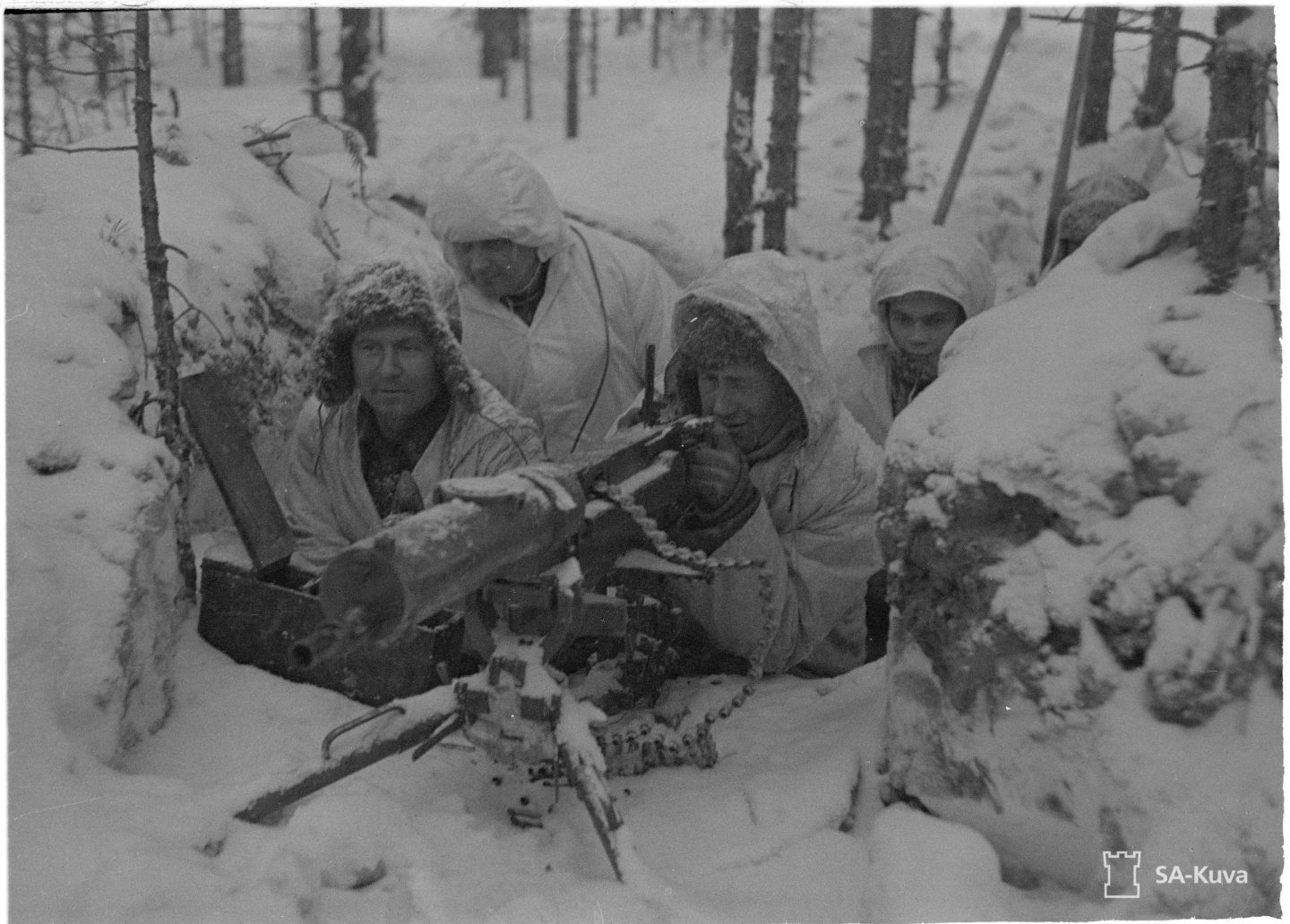The first thought that you may have after reading the title of this blog: “… in the Karelian woods? Where is it?“. Therefore, for the sake of convenience of the reader, I consider it appropriate to tell about the place where I traveled three years ago.
Karelia is located in the north of Russia, between the White Sea and Finland. The distance from St. Petersburg to its center, Petrozavodsk, is approximately 450 kilometers.
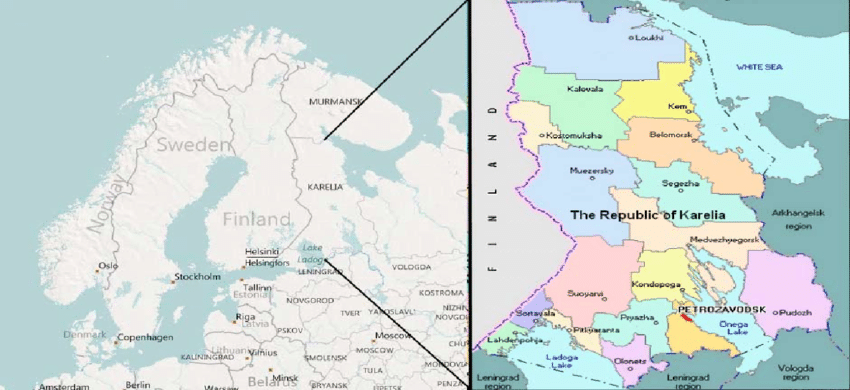
Map by Maksim Trishkin
Karelia has always been famous for its coniferous forests, rocks, picturesque landscapes, fast rivers and beautiful lakes. As well as for broken roads, a relatively poor population and a lack of infrastructure to places far from the administrative center. In 2017, I went on a big trip around this republic, in the company of explorers about my age.
In fact, we called ourselves an ethnographic expedition and our goal was to study the history and culture of this region, which is home to the Karelians, a Finno-Ugric ethnic group that almost assimilated with Russians or Finns. Our goal was to travel across the republic and see those places where there are no usual tourist routes to.
After the Russian Empire ceased to exist, Karelia became the object of territorial disputes and conflicts between the new Soviet authorities and the new independend Finland. During the Winter War in 1939-1940, the USSR took the parts territories from Finland, and during World War II, Finnish units of the Nazi troops were transferring soldiers to attack Leningrad from the captured Karelia. Since then, many defensive fortifications of those times have survived and one of our goals was to find and see them.
Bear Mountain
During our big trip, our group made a stop in a small town called Medvezhyegorsk (translates as “Bear Mountain”), which is located on the shores of the Lake Onega. The town itself is a very dull backwoods, however it has a pretty wooden railway station.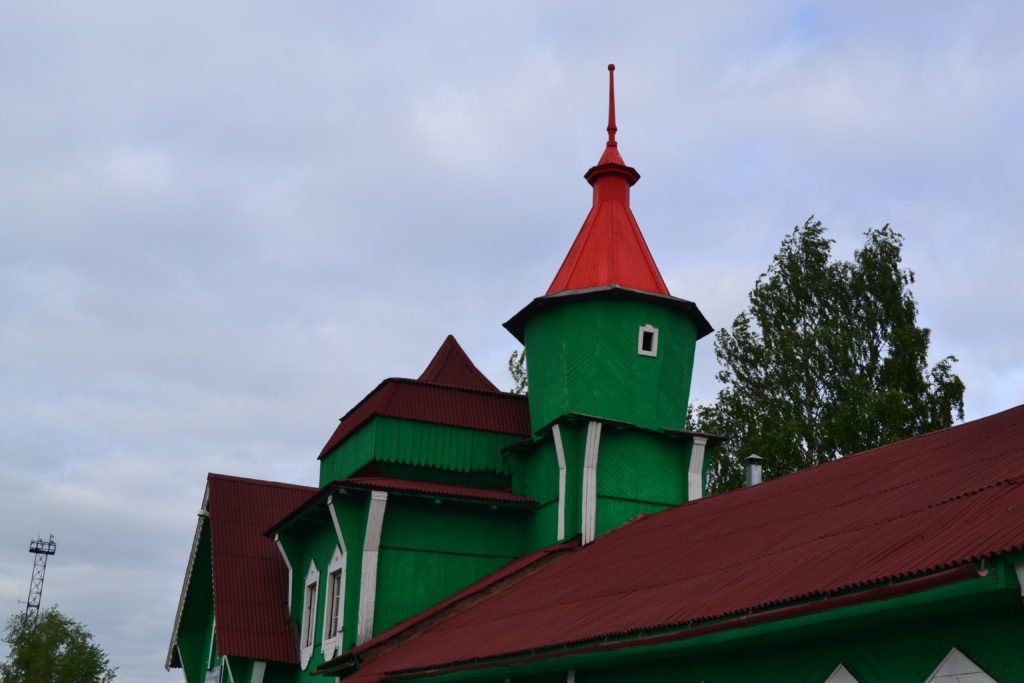
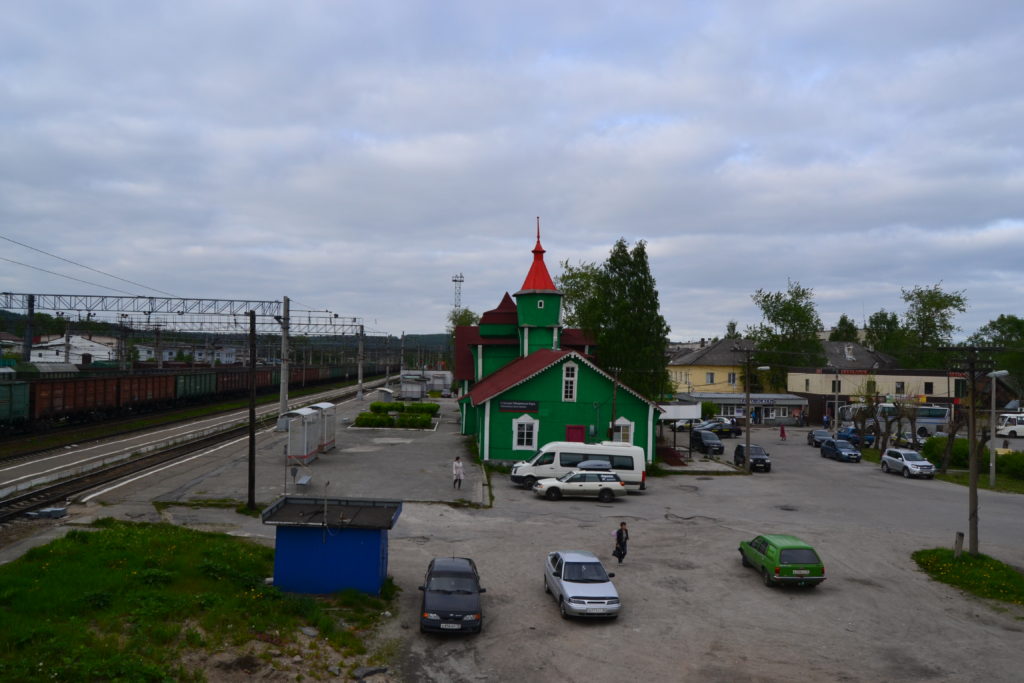
Medvezhyegorsk. Downtown
In Stalin’s times, the population of the city was replenished mainly due to the prisoners who arrived there in one of the GULAG camps located nearby. However, the town itself was not very interesting for us, we were searching for what is hidden in the woods around it.
During the Second World War, Medvezhyegorsk was occupied by the Finnish troops controlled by the Wehrmacht and had been hold by them as a strategic point on the shores of the Lake Onega. During the occupation, the Finns built a large number of powerful defensive fortifications, including reinforced concrete bunkers built inside the rocks. Exactly these echoes of war attracted us there.
Most of the bunkers are located along the coastline of Onega lake from where Finnish units could observe the opposite shore.
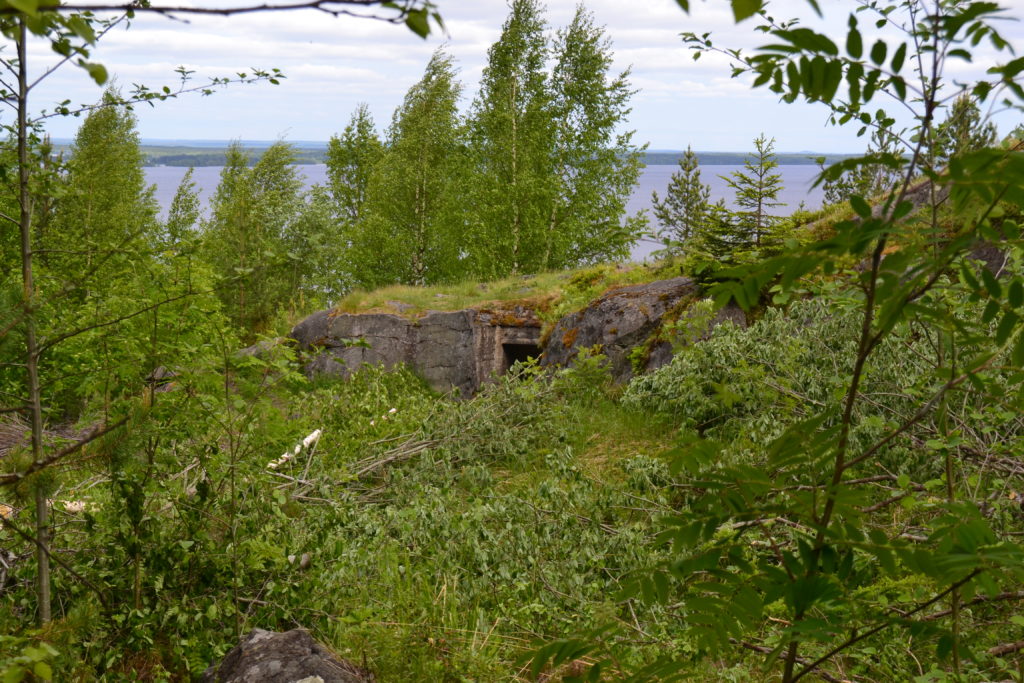
The main strip of fortifications consisted of two-three-story pillboxes, which are built in the rocks and were equipped with artillery and heavy machine guns. Each point of defense had a ventilation shaft and a multi-tiered staircase for interfloor communication. Each tier and pillbox had separate entrances, disguised from the outside. The pillboxes were communicated in layers through trenches cut in the rocks.
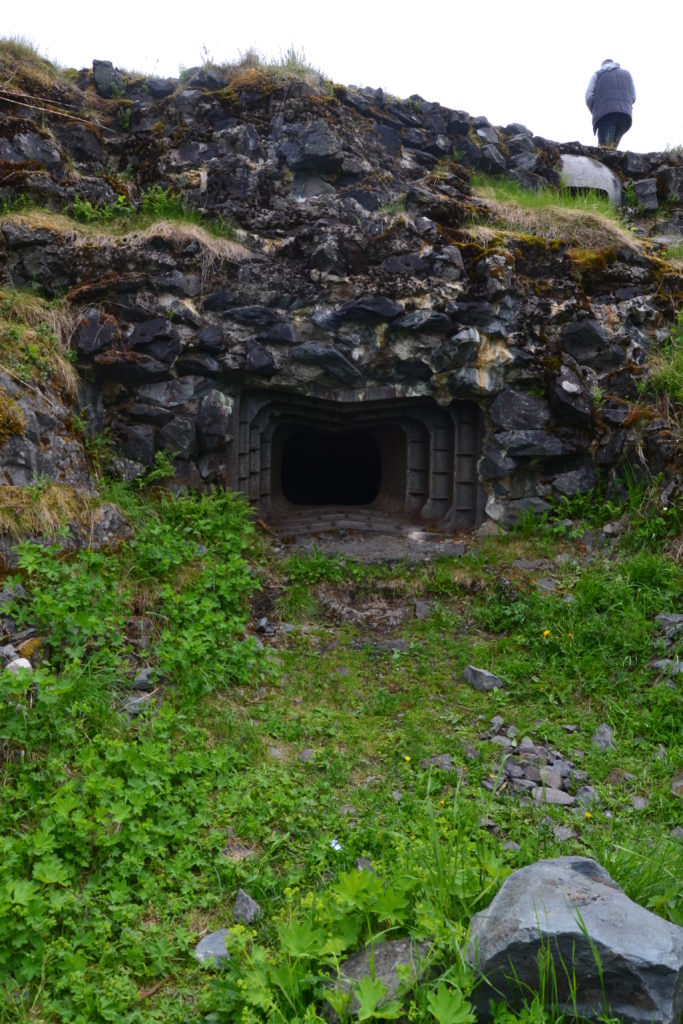
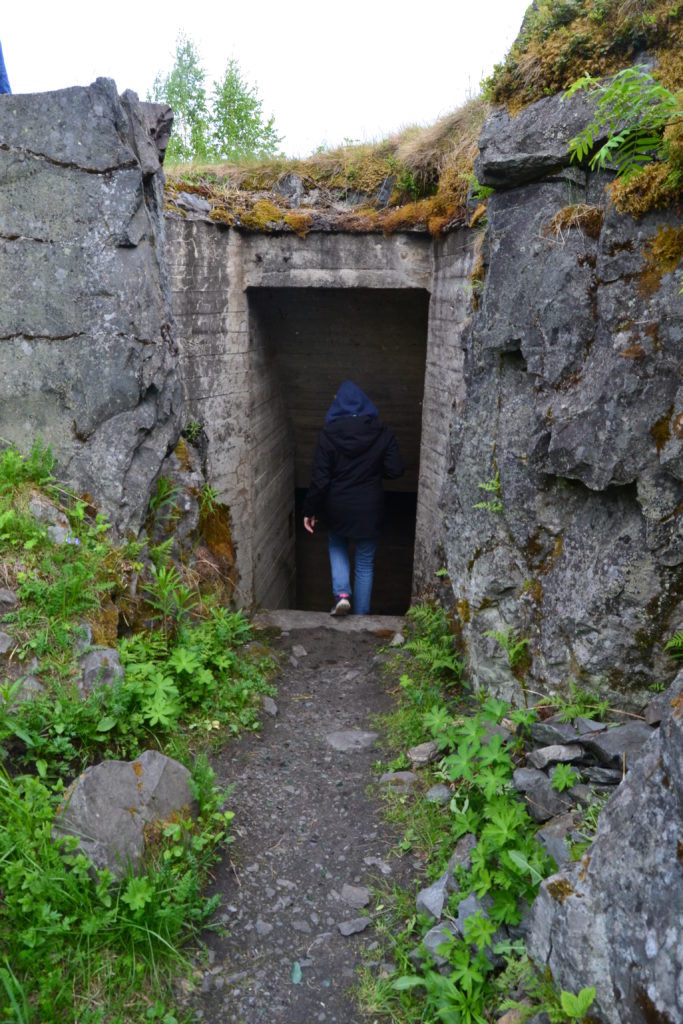
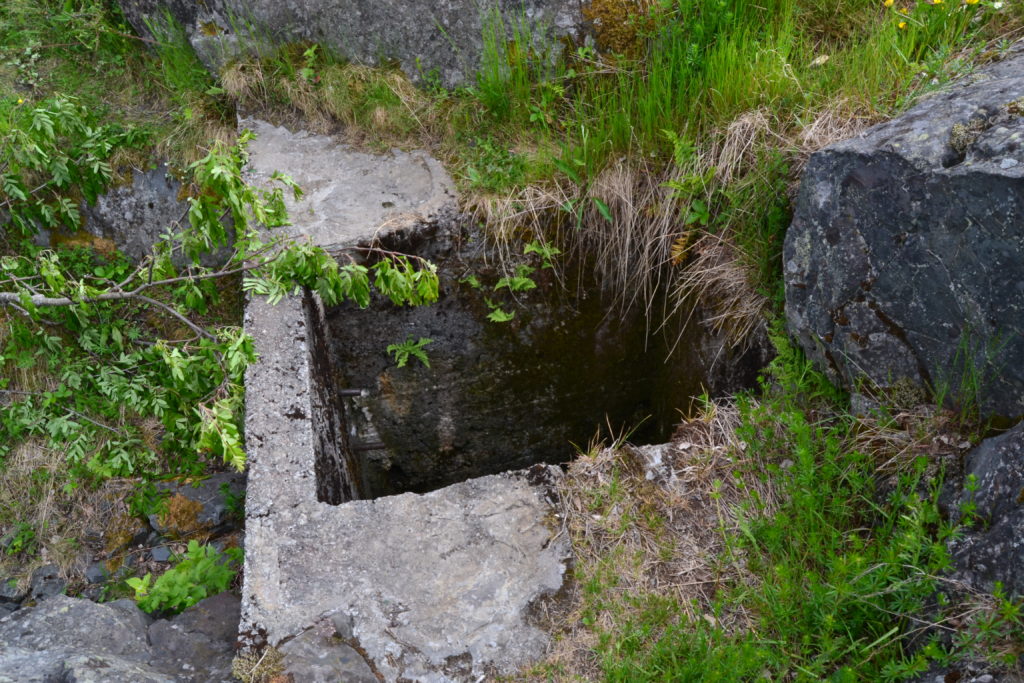
Inside most of the pillboxes there were a rest room, an observation post and a machine gun nest. Each room was closed with a massive bolted iron door. In a small corridor there was a trapdoor to the lower floor – to escape to the shelter. The pillboxes had one or two armored caps with holes at the top – for observing the airspace and embrasures for shooting.
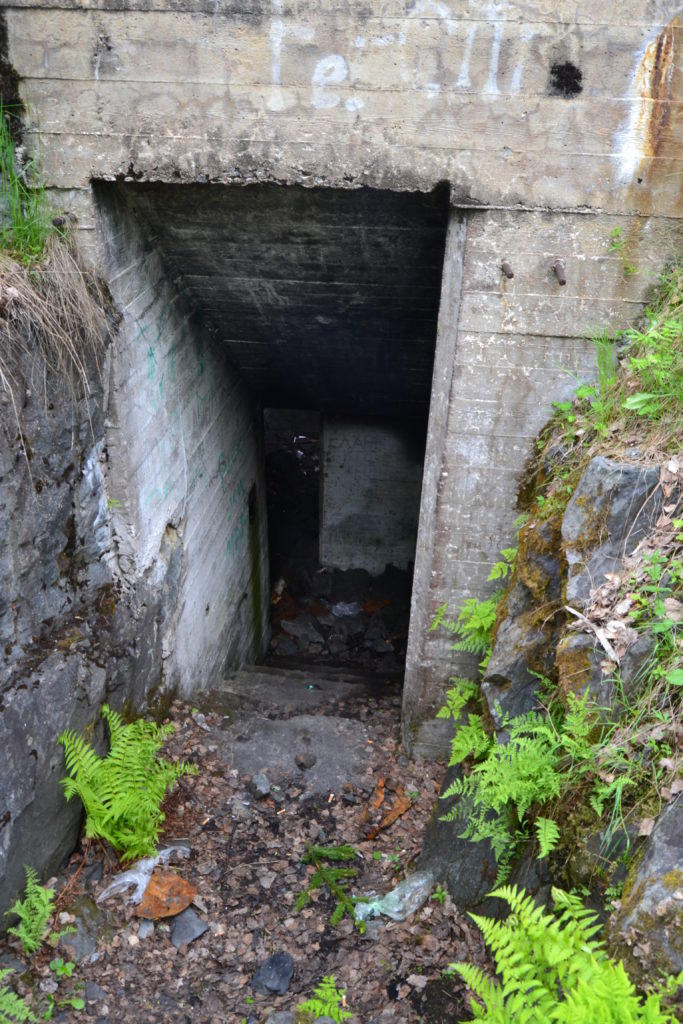
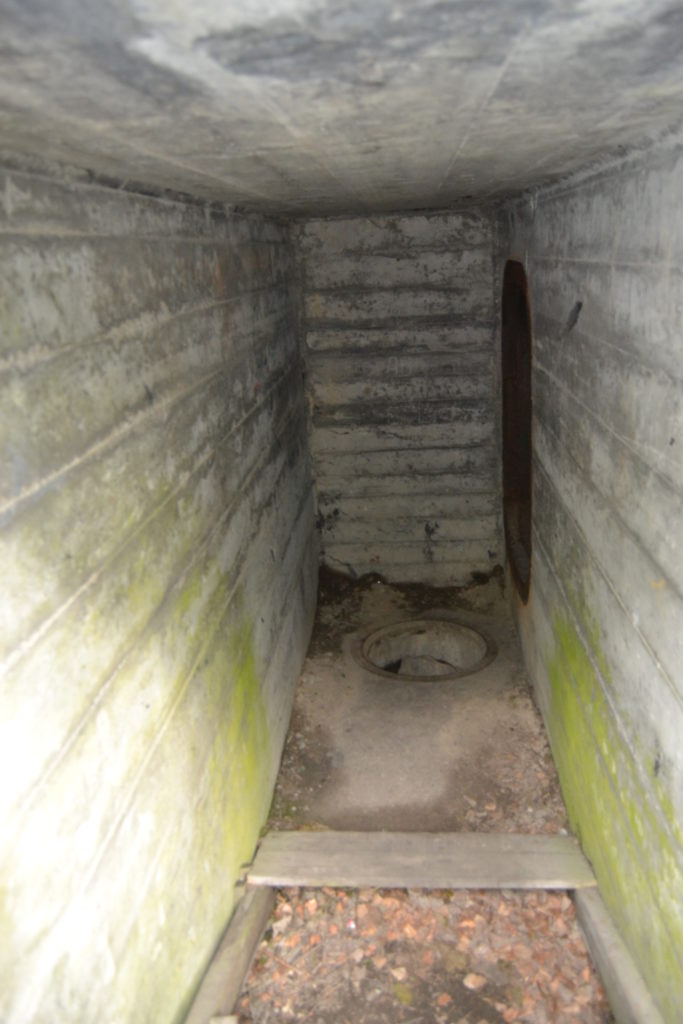
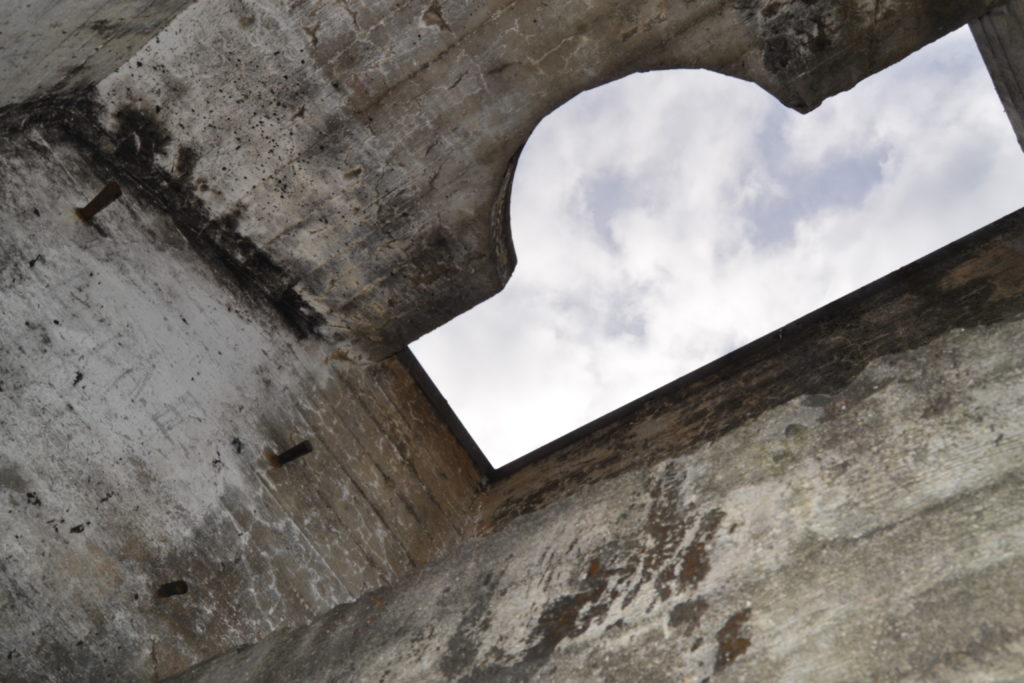
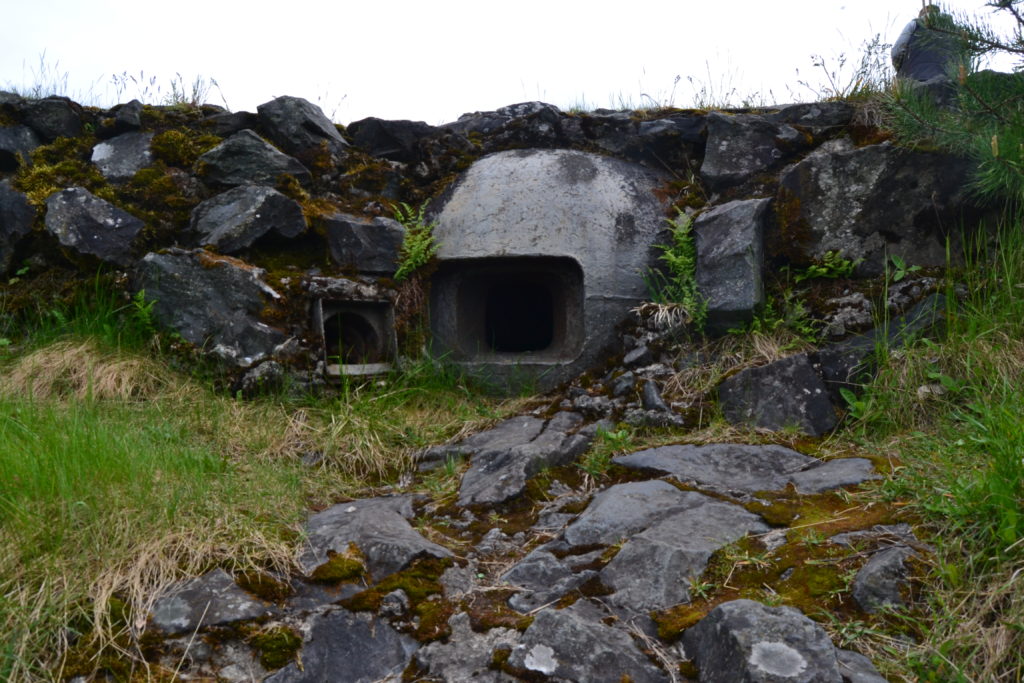
The Finns were holding the Medvezhyegorsk area for three years. In 1944 the Soviet troops broke the defense line and captured the city. In the post-war years, some of the pillboxes were blown up, heating pipes, military and engineering equipment of strong points were dismantled, entrances to underground communications were blocked.
What has remained is living out its days with a view of the picturesque landscape of the Lake Onega.
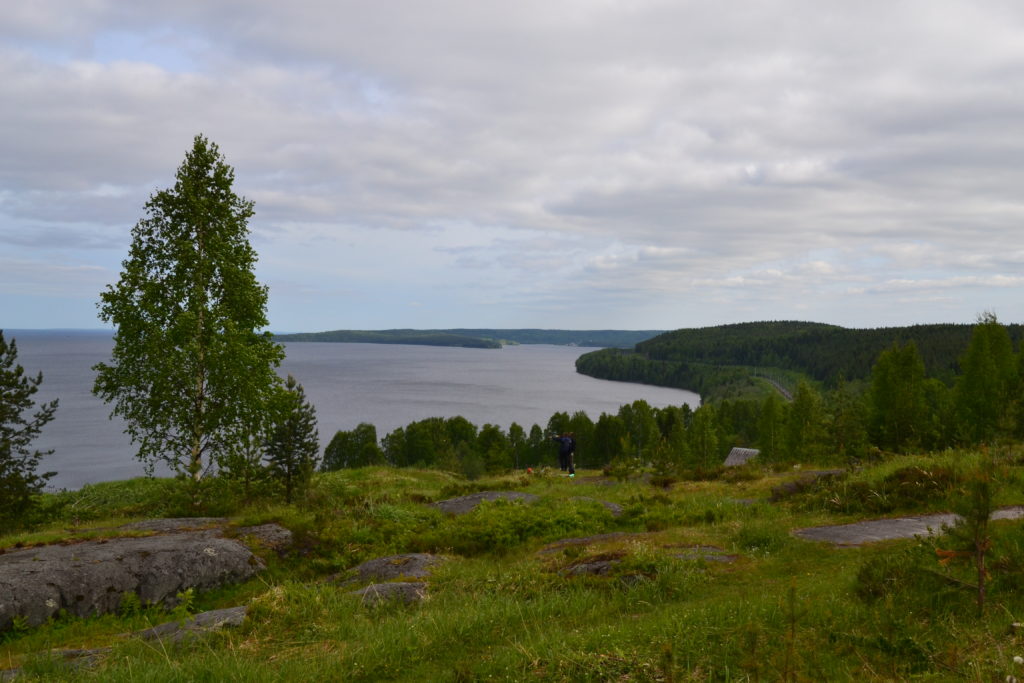
The largest of the surviving strongholds, the so-called “Vepsian Castle”, covers a rocky ridge behind the line of defense:
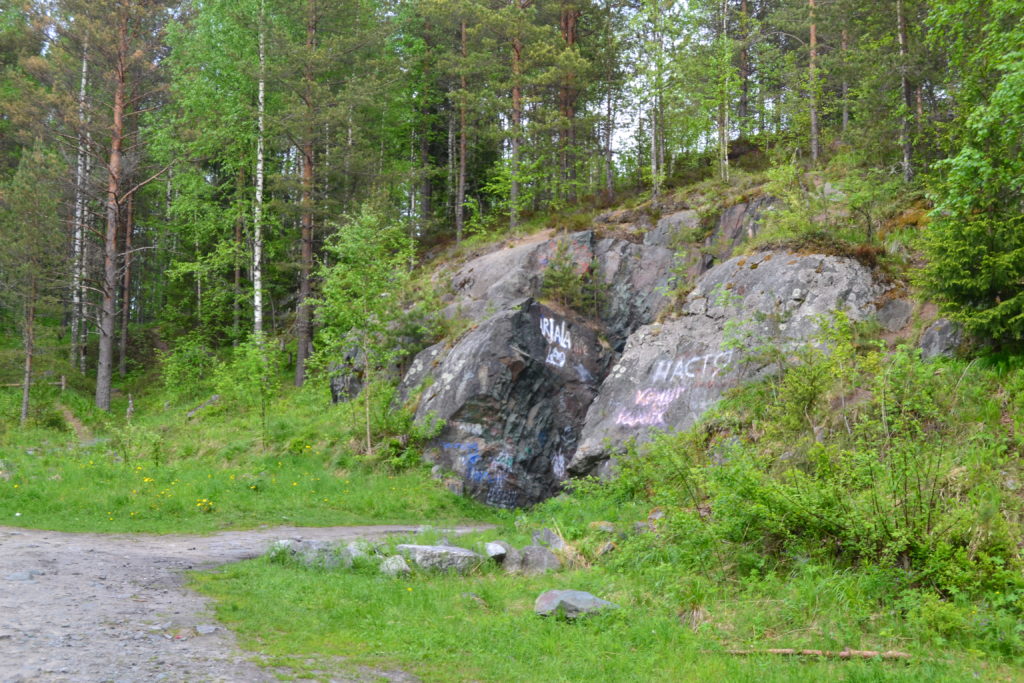
In the postwar years, part of the rock outcrops with defense points was developed for the release of rubble. “Vepsian Castle” was equipped with machine-gun pillboxes and a gun pillbox. In the center of the rock there was a command post and a refuge for personnel.
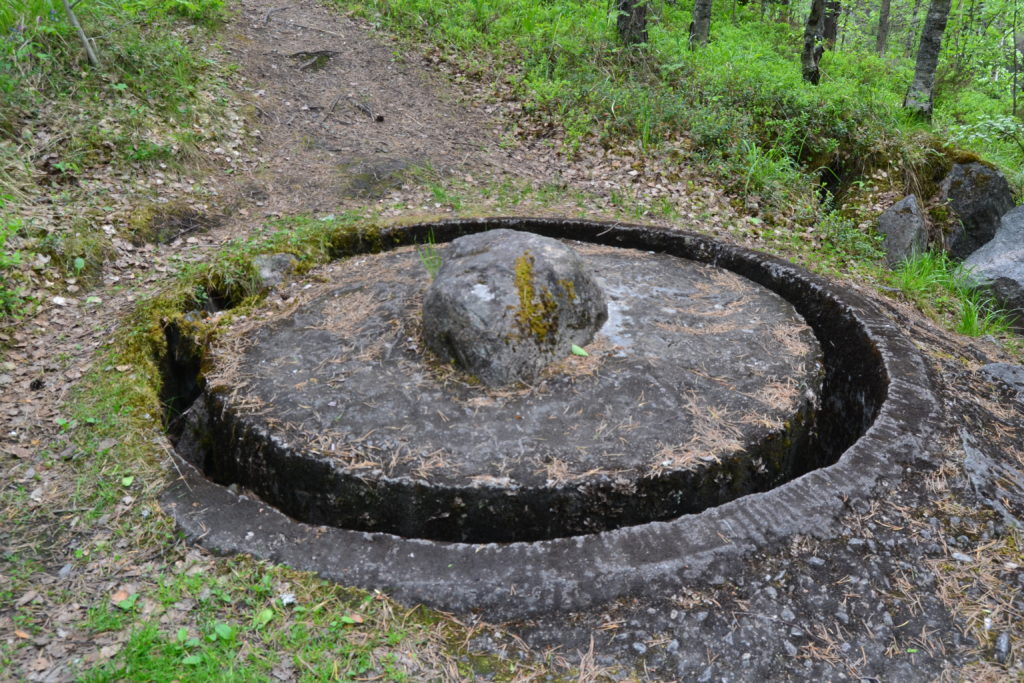
Ventilation shaft
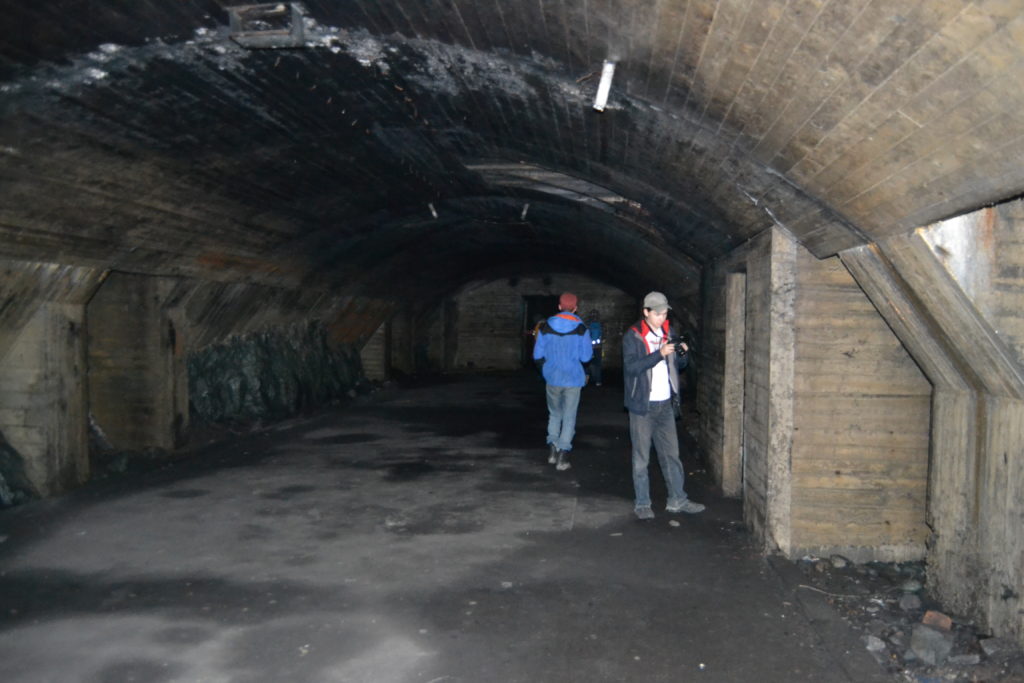
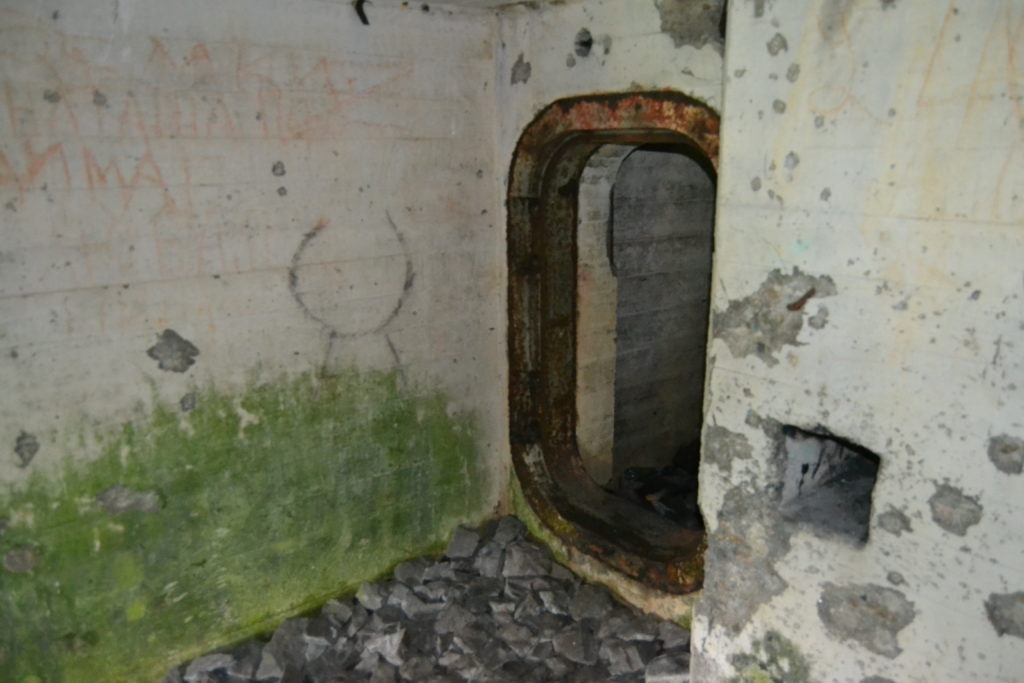
In 1939, the Soviet-Finnish war began. The purpose of the war for the Soviet Union was to seize territories and establish control over the Gulf of Finland. To repel the attacks of the Soviet troops, the Finns built the so-called Mannerheim Line – a complex of barrage and defensive structures in order to slow down the advance of the Red Army deep into their territories.
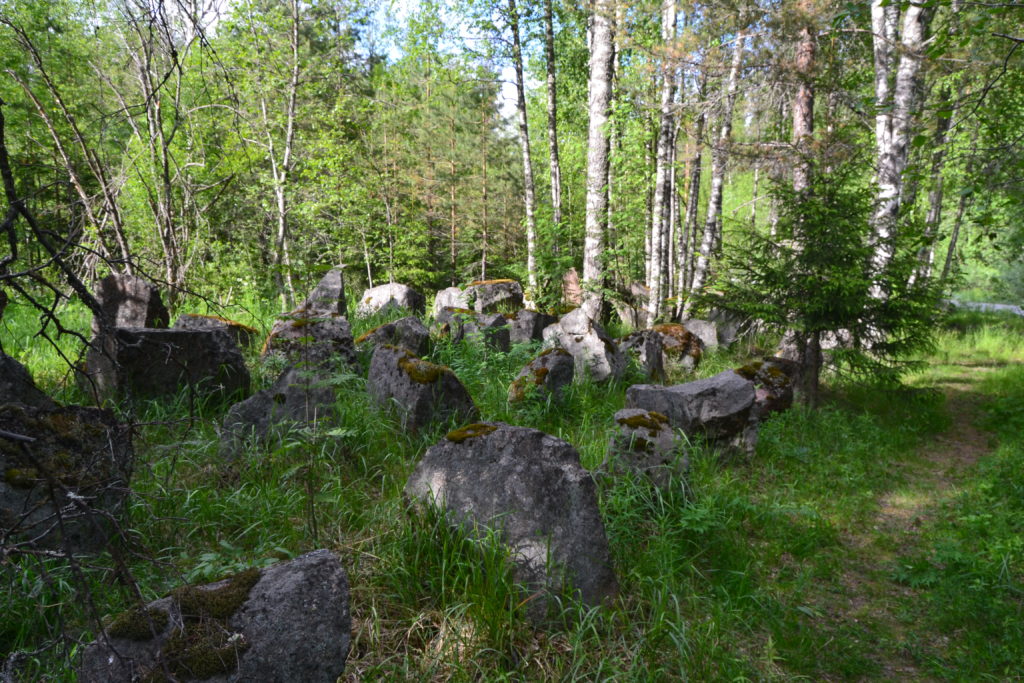
These ridges of rocks were supposed to slow down the advance of Soviet tanks. Mines were also planted between these rocks in case if infantry crosses them.
This video shows one of the bunkers on the Mannerheim Line:
Today, these structures stand in desolation, meanwhile, they are military monuments. Due to the lack of accessible infrastructure to these places, not many people know about these unique sites and their significance in the Second World War. On that trip, I managed to visit only a part of all the defensive structures on Onega. For connoisseurs of history, as well as for dark travelers, these places will be of great interest (only if you can get to them)
Thank you for your reading!
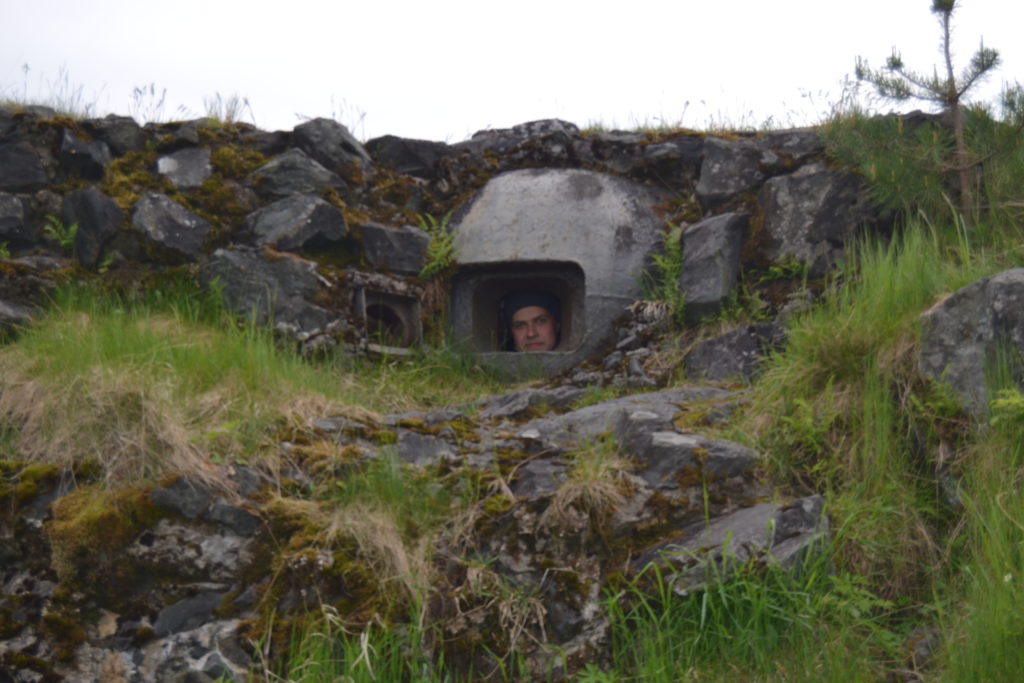
The blog is written as the assignment #3 for CMNS 3020. Prof.: Kathleen Scherf. Thompson Rivers University
December 2nd 2020
